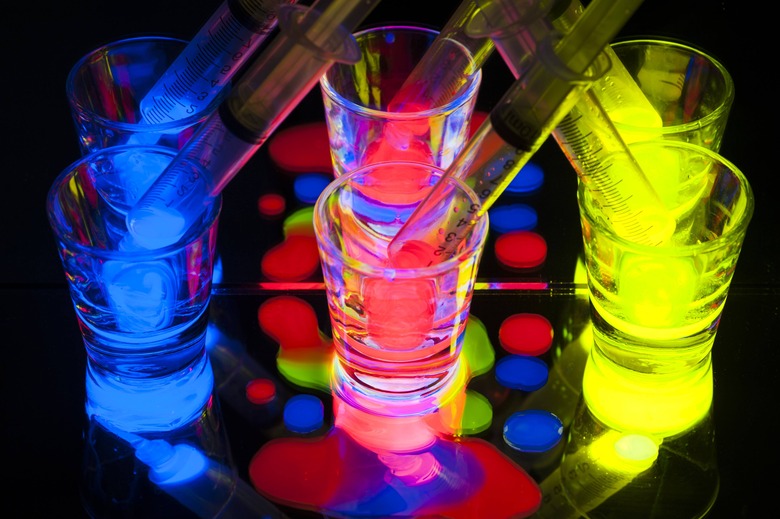Glow-In-The-Dark Drinks Are A Really Bad Idea
Every summer, it happens: People start drinking more often, anything made with lemon is practically worshipped, and for some strange reason, people put glow sticks in their cocktails.
The idea seems really cool — drinks that glow? They sound like a total party starter. Add those and a black light to your living room and suddenly you're hosting the rave of the century. But, like many other dumb ideas people come up with while intoxicated, this practice fails to take into account logic, safety, or consequences.
Glow sticks are essentially plastic tubes filled with dibutyl phthalate, a clear, oily liquid that (according to the Carolinas Poison Control Center) is "low in toxicity but can cause irritation to any part of the body that it comes into contact with." Of course, the irritant is locked in the plastic tube, so you're theoretically safe — if you trust your intoxicated self to prevent the thin plastic from even the slightest crack.
"To stay safe, I recommend skipping the sticks," says Lindsey Pasieka, a consumer rights investigator for ConsumerSafety.org. Why risk your health for a glowing drink?
What's worse is that some people are microwaving their glow sticks prior to using them to illuminate their glass. The radiation from the microwave causes the sticks to glow brighter — an appealing quality on the surface, but what's going on beneath the plastic casing? If there is anything you probably shouldn't do with an already questionably substance you're putting in your drink, it's to expose it to concentrated radiation. Pasieka explains, "Heat can make them explode, causing both skin and eye irritation upon contact, and ingestion can result in discomfort, nausea, and vomiting." Vomiting shuts the party down fast.
Whether you're looking for a fun cocktail to spice up your summer or just trying to look cool on Instagram, we recommend you leave the glow sticks out of your glass.
